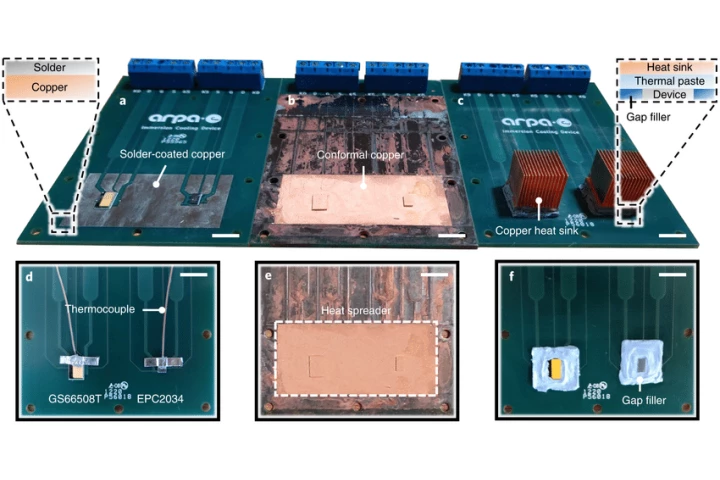Miniaturisation
-
A team from the University of Illinois and UC Berkeley has demonstrated a new cooling method that sucks heat out of electronics so efficiently that it allows designers to run 7.4 times more power through a given volume than conventional heat sinks.
-
Since its launch in 2007, Google Street View has been expanded to include things like coral reefs, hiking trails and the Amazon River. In its latest "off-road" adventure, however, Google Maps used miniaturized Street View cameras to visually map a model railway.
-
Researchers from Berkeley Lab and Columbia University claim to have created the highest-performing, single-molecule diode ever. Said to be 50 times better in performance and efficiency than anything previously produced, this device may pave the way for a range of powerful new nanoscale electronics.
-
Researchers have built a molecule-sized transistor that can reportedly control the flow of single electrons, paving the way for the next generation of nanomaterials and miniaturized electronics.
-
Microdisplay manufacturer, Kopin, has produced the world’s smallest VGA color-filter LCD, which measures just 0.27-inches diagonally and could be ideal for the digital single-lens-reflex (DSLR) cameras with high-resolution electronic viewfinders.
-
A team at the Delft University of Technology have developed a Micro Air Vehicle (MAV), which they claim is the smallest flying, camera carrying ornithopter in the world, measuring 10 cm from wing tip to wing tip.
-
It may have taken a while to get traction, but GPS appears to be the next technology destined for ubiquity. A new research report from Parks Associates indicates that by 2012, more than one in ten humans will buy a GPS-enabled mobile device each year.
-
BAE Systems has signed a $38 million agreement with the U.S. Army Research Laboratory to spearhead development of next-generation intelligence-gathering military robots
-
Promising a boost for encryption technology in mobile equipment, Toshiba’s tiny new physical random-number circuit generates random numbers at a data rate of 2.0 megabits a second.
-
TOMY Toy Corporation's i-SOBOT - a 6.5 inch high, fully articulating and bipedal robot - has been certified as the “smallest humanoid robot in production” by Guinness World Rec
-
August 20, 2007 Having already successfully built covert spy cameras into sunglasses, earphones, clothes buttons and screw heads, Taiwanese electronics corpor
-
July 6, 2007 Researchers at the University of Southampton have developed a kinetic energy generator which derives electrical energy from the vibrations and move
Load More










